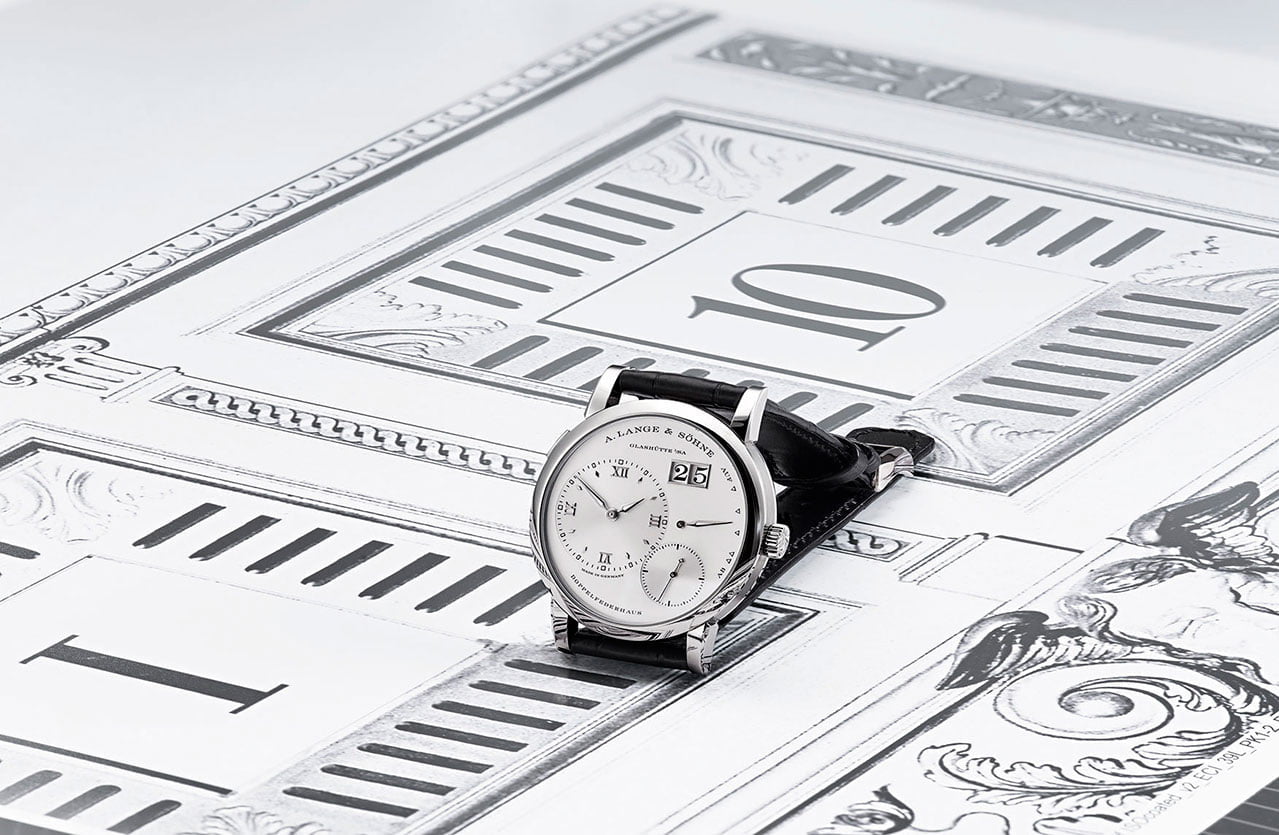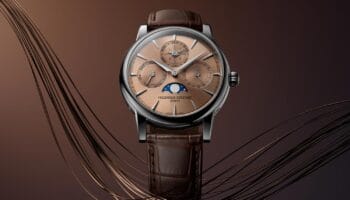The Lange 1 owes its recognition to the asymmetric dial design and the prominent Lange outsize date. It was inspired by the five-minute clock in the Dresden Semper Opera House, which, for 175 years, has been a hallmark of the world-famous operatic venue.
Some ideas are so persuasive that they can survive catastrophes and retain their fascination even 175 years after they premiered. One of them is the five-minute clock in the Semper Opera House that displays the time digitally. Aloft over the stage, it indicates the time in an artistically framed double aperture: the hours in Roman numerals on the left, the minutes – in intervals of five – in Arabic numerals on the right. Every evening, the operagoers wait patiently for the minute display to switch from 55 to the blank white field, because the performances always begin at the top of the hour.
When the Royal Court Theatre was inaugurated in 1841, this technical marvel was considered a sensation, and, for its inventor, Johann Christian Friedrich Gutkaes, it resulted in his appointment to court clockmaker. Together with his employee Ferdinand Adolph Lange, Gutkaes completed the exceptionally large tower clockwork with two counter-rotating wheels and installed it at a height of 20 metres above the stage. Only 28 years later, the opera house and the clock were destroyed in a blaze. For the new building, dedicated in 1878, Gutkaes’ former employee Ludwig Teubner created a new stage clock modelled along the lines of the original. When the Semper Opera House – again destroyed in World War II – was inaugurated for the third time in 1985, the clock, with its characteristic double aperture, presented itself to the audience where it had always been: high above the centre of the stage.
In 1994, the outsize date of the Lange 1 created a new future for the ingenious concept of the five-minute clock. In a small format, it pays tribute to the masters of the past. Compared to conventional solutions, the carefully engineered design results in date displays that are five times larger and thus crisply legible. Just like its historic role model, it is based on two separate display elements: Except that, here, they are not wheels. The components are a units ring with the numerals 0 to 9 as well as a tens cross with the numerals 1 to 3 and a white field. The technical challenge was to master the transition from the 31st of a month to the 1st of the next month. While the tens cross rotates through 90° and the empty field advances into the aperture, the units ring remains standing for a day. A pusher at 10 o’clock makes it possible to quickly correct the outsize date. In 2015, with the debut of the all-new manufacture calibre L121.1, the next chapter was written in the success story of the Lange 1, which now spans over two decades. Its technical finesse now comes to the fore in the precisely jumping outsize date display as well. As of immediately, in addition to pink-gold, yellow-gold and platinum models, it is available in white gold with luminous hands and markers.








